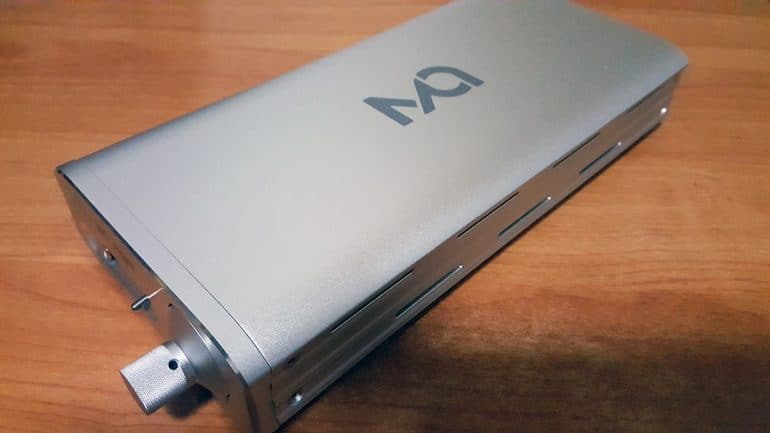“Freedom of expression is the matrix, the indispensable condition, of nearly every other form of freedom.” Benjamin Cardozo
Introduction
Based in the Xi’an Economic and Technological Development Zone, Matrix digital is a brand that has gained significant global coverage in the digital audio sector. Utilizing advanced research facilities and professional audio testing equipment they aim to pursue optimal product quality with excellent service and reasonable prices.
Today I’ll be taking a look at the HPA-2 Classic headphone amplifier, which according to Matrix’s website
“is the improved model of HPA-2, the optimized circuit design, new style appearance, exquisite processing technology and excellent performance to make it better.”
Disclaimer
This sample was loaned to me for the purpose of an honest review. All opinions and observations here are my own based on my experience with the product. I have no affiliation with the company and do not benefit financially from this review.
The HPA-2 Classic has an MSRP of $289 and is available for purchase from popular audio sellers and of course Matrix’s own online store. I’d like to thank BKK Audio for the loan unit.
Official Matrix website: http://matrix-digi.com/en/index.html
The full list of specifications can be found on the official website: http://matrix-digi.com/en/specifications/102/index.html

Packaging and accessories
The HPA-2C comes in a fairly plain white box with nothing but “Matrix Audio” and a QR code printed on the front. On the inside we find the unit wrapped in some protective material and held securely in a white foam inlay. Apart from the DAC/Amp there’s also a user manual, power cable and USB cable. Not a lot there but it’s all you need to get things going out of the box and helps to keep prices more reasonable for the consumer.

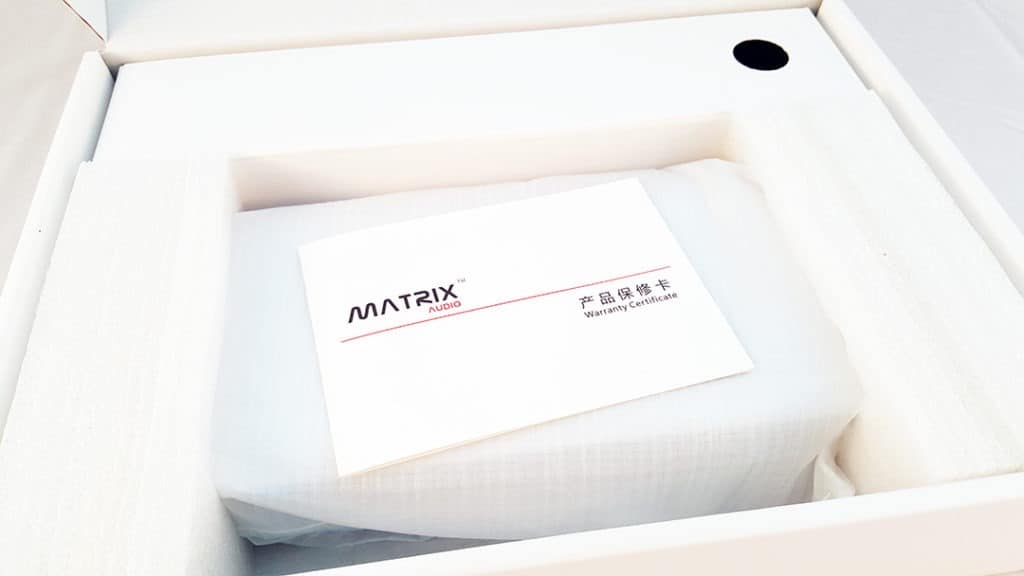
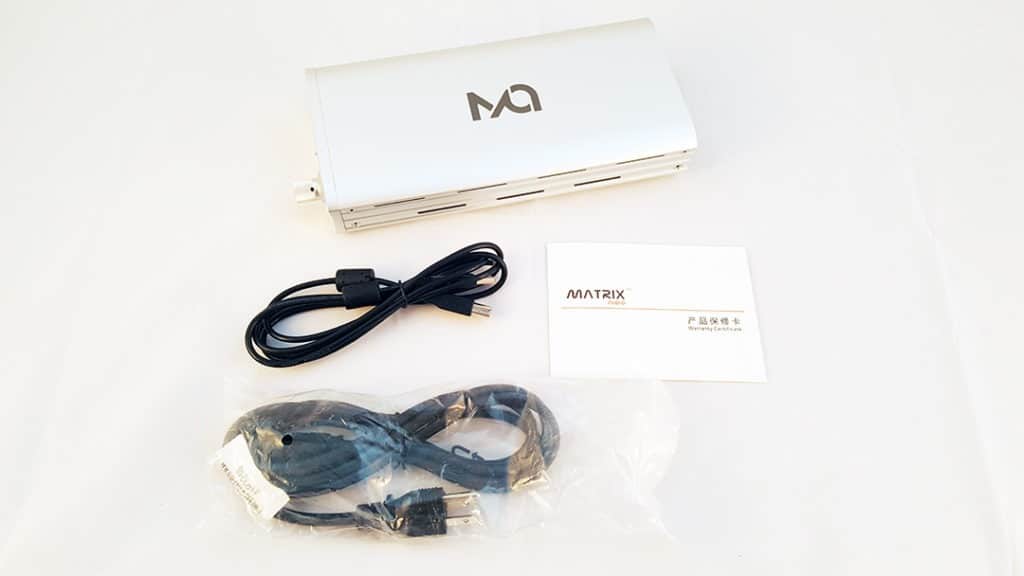
Build and usage
The first thing you’ll notice about the Matrix HPA-2 Classic is it’s BIG. It was like pulling an engine block out of the box. It’s pretty hefty too, weighing in at a solid 1.22kg. You’ll want to have a decent amount of desk or table space available for this. Once you get over the shock caused by the size, the next thing to note is that this is a very nicely machined chassis.
There’s a single Matrix audio branding logo on the top leaving the rest of the surface clear. The sides of the chassis are slightly concave and lined with two rows of ventilation slots running from front to back and it’s a good thing too because this baby gets very warm when in use.
The front panel is a lovely, thick and sturdy slab of aluminium, again nicely crafted with all smooth edges and polished to a sheen finish. On the panel (from left to right) are the 6.35 mm headphone jack, a blue power LED, an input select switch. These are all in a nice little recessed section that separates the section and makes the panel a bit more interesting to look at.
Finally, there is the volume knob. The headphone jack is nice and tight and feels very secure when plugging headphones into it. Fortunately the LED is very small and not too bright so most of the time it goes unnoticed unless you’re looking directly at the front panel. The select switch also feels of a high quality and is used to choose between USB and Analog signal inputs. There is a small U and A next to the corresponding switch position but the text is very small and difficult to see unless you’re in a really well lit area but it’s unlikely to cause anyone grief. The volume knob is textured and nicely weighted giving you firm control and precise adjustment.
Populating the back panel (from left to right) are a USB input, High / Low gain switch, analogue RCA input, analogue RCA output, power switch and 3 pin power socket.
Getting things going is a simple matter. Plug in the power and USB or analogue source, stick in some headphones and you’re good to go. Just make sure the input select switch is in the right position first. For Windows users, you’ll need to install the Matrix driver to get it working on your PC (supposedly this won’t be necessary much longer as Windows is soon adding native support for USB DACs).

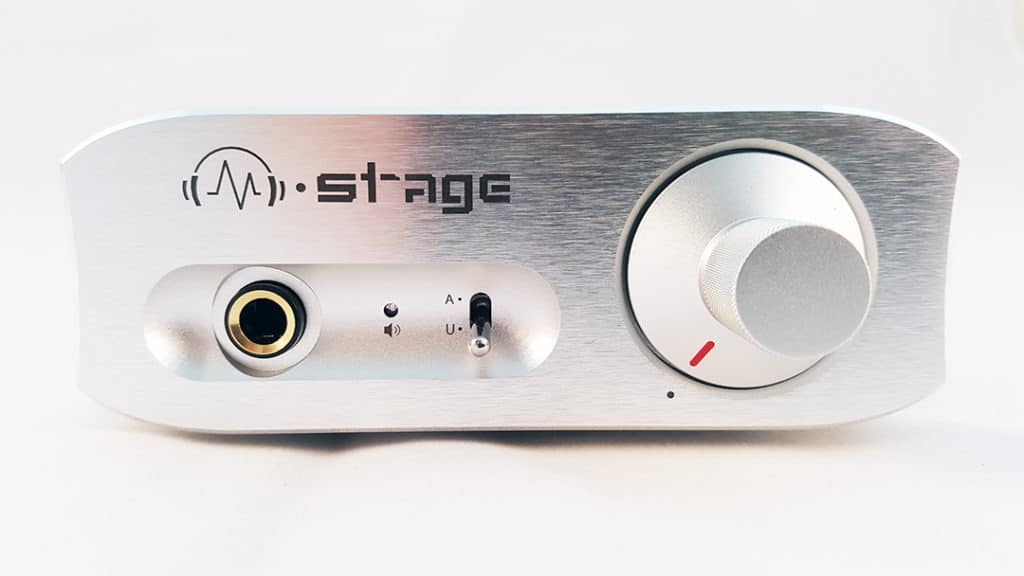


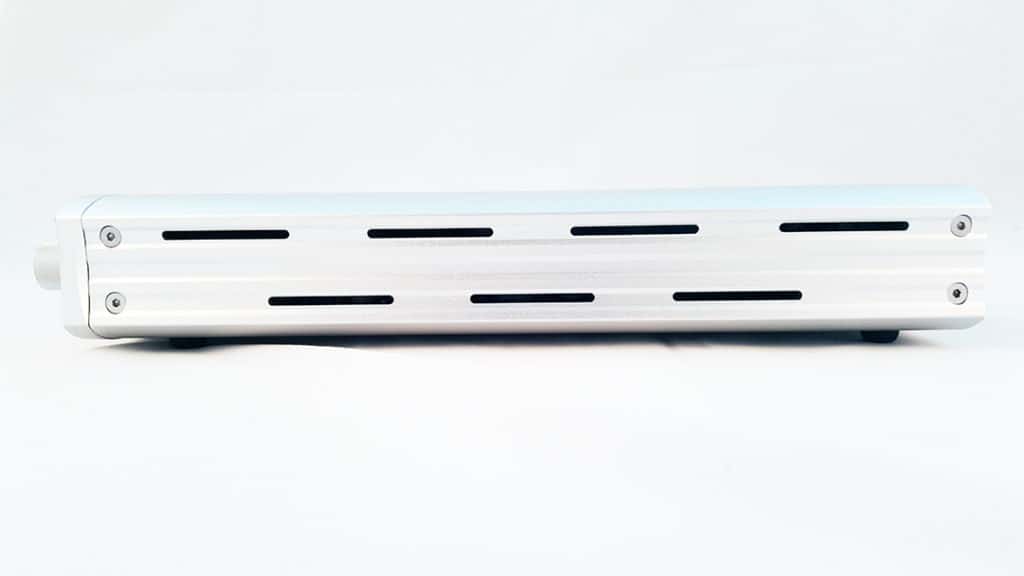

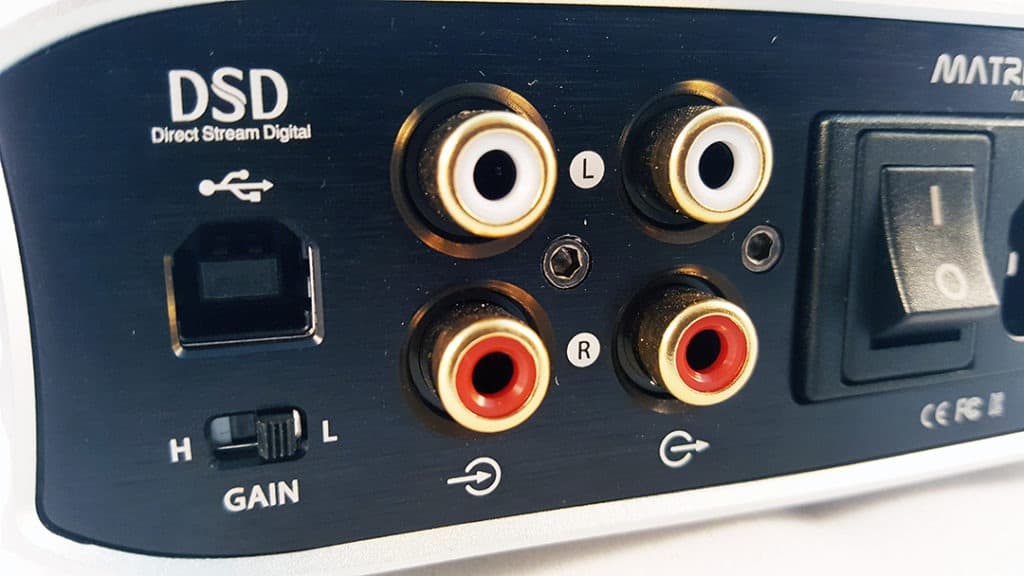

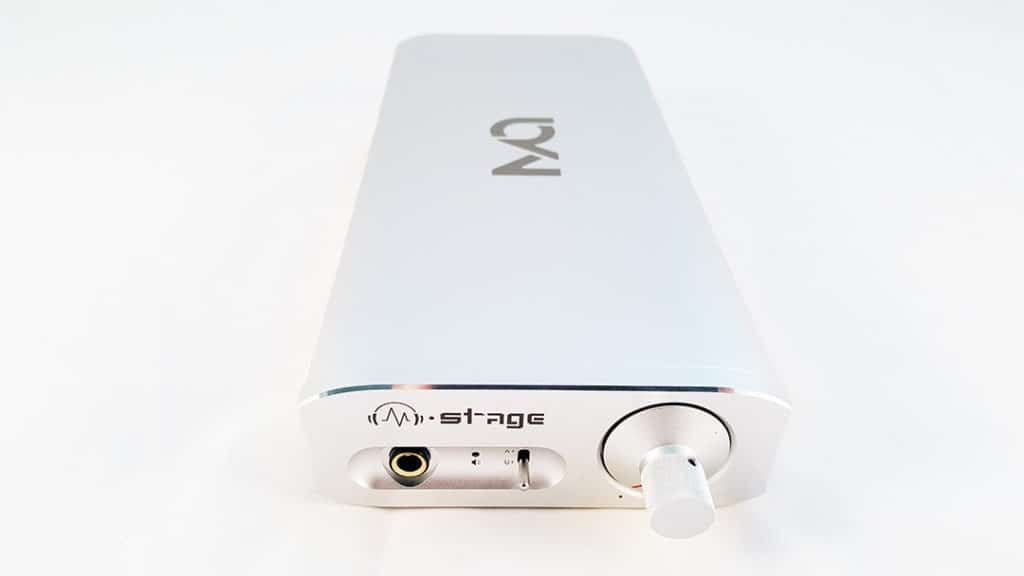
Sound
With an output impedance of 10 ohms, these aren’t really geared towards driving sensitive IEMs and it shows with a noticeable buzz/hum. With higher impedance headphones the buzz disappears but it was still present on sensitive full-sized cans.
The CIRRUS LOGIC CS4398 DAC has a great sound that is transparent and lively, delivering music in an energetic and engaging fashion. I had good results using the built-in headphone amplifier and also when using the line out to my FX Audio 1002A amplifier and speakers. Instrument separation is fantastic as is soundstage. There might be the slightest bit of smoothing in the DAC’s output. The CS4398 has selectable fast and slow roll off digital interpolation filters and in my opinion Matrix has made a good implementation of its capabilities.
For the amp stage, well I briefly touched upon it above but basically, you don’t want to be using it with anything overly sensitive. Extension of highs and lows is on point and with some good headphones delivers a truly enjoyable experience. With the Beyerdynamic DT990 Pro (250 ohms) there’s no evident background noise and I found anywhere between 40%-60% volume on Low gain was plenty enough power to drive these. Low gain output = +6dB and High=+15dB (160mW at 600ohms) so on paper the HPA-2C should be able to power just about anything you throw at it.
With the Ultrasone Performance 860 (32 ohms, SPL: 94 dB) I didn’t detect any buzz while on the MSUR N650 (32 ohms, SPL: 105dB) it’s immediately noticeable so as long as you’re using something that isn’t too efficient you should be okay but take that with a grain of salt. Speaking of the Ultrasone, they sound nice paired with the Matrix with good soundstage and load of details but seems a little “on edge” for lack of a better term. The pairing of the DT990 worked better overall for me, sounding effortlessly smooth yet full-bodied and energetic at the same time.
Comparison
Audinst HUD-MX2 ($200 USD)
The Matrix HPA-2 Classic has a more energetic and airier sound while the HUD-MX2 has a smoother, more laid back presentation. Both have good power output but the Matrix pulls out ahead with some impressive specs. Besides, to utilize High gain on the Audinst you need to actually open up the chassis to make the change. The Audinst fares better with sensitive IEMs which aren’t really viable with the Matrix due to the constant buzzing. Both units get pretty hot when in use.
The Audinst has a much smaller footprint so occupies a lot less desk space. So easy recommendation would be: for use with IEMs it’s Audinst all the way and similarly for full-sized headphones, the Matrix is the way to go. If you want to use IEMs and headphones the Audinst should do the trick unless you have some seriously hard to drive or inefficient headphones.

Conclusion
The Matrix HPA-2 Classic is a beautifully crafted beast of a DAC/headphone amplifier. For those wanting something to hook up to a computer for full-sized headphones at a reasonable price, this would be a great choice. It is a fine sounding amp and not too hard on the eyes either. It would be nice to have an additional 3.5 mm headphone jack added to the front panel – there’s certainly enough room for one.
At $289 I think it does really well and where sound quality is concerned I personally prefer the Matrix to the HUD-MX2 and possibly the more expensive JDS Labs The Element. If you’re looking and this is within your price range it’s definitely worth considering.


